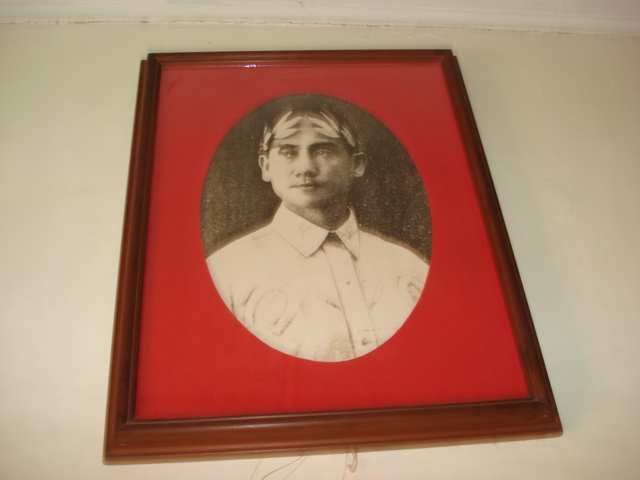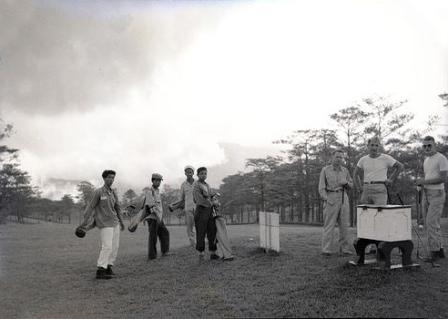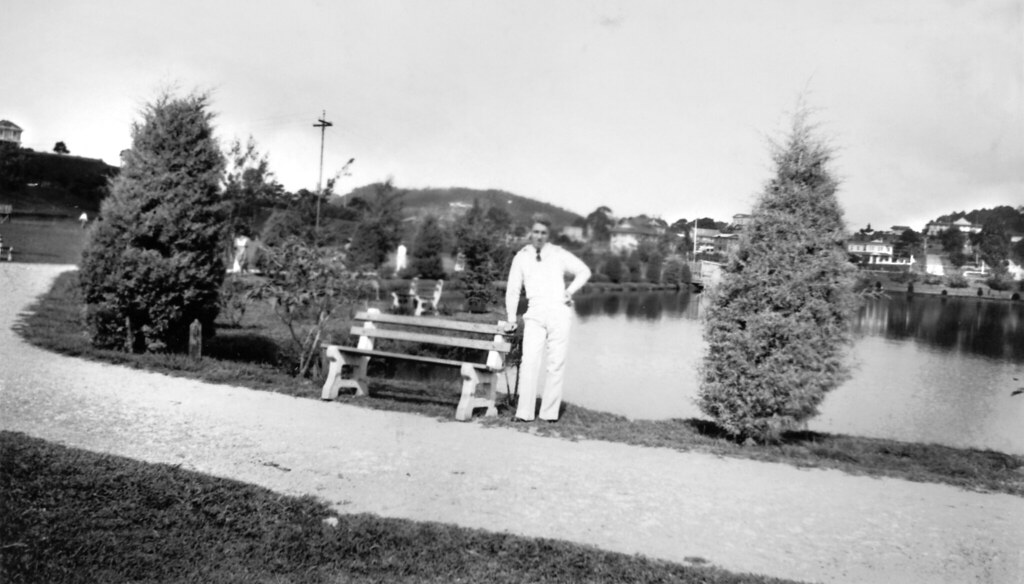Bayan Ko
Original Tagalog lyrics by Jose Corazon de Jesus
Melody by Constancio de Guzman.
Ang kwento sa likod ng kantang ito ay ating masasaksihan nuong mga panahon na ang gobyerno ng mga Amerikano ang nasusunod sa bannsang Pilipinas. Bagamat inaasahan na mga Pilipino ang magiging tagapamahala sa bandang huli ng kanilang kasarinlan, ang kaganapan ng kasarinlang g ito ay hindi agad naipatupad sapagkat ayaw lisanin ng Amerika ang Pilipinas sa kadahilang hindi pa handa ang mga Pilipino sa kanilang pagtataguyong ng sariling pamahalaan. Kaya't naisilang ang awiting kumakalabit sa puso ng bawat Pilipino na makamit na ang kalayaan inaasam: Ang "Bayan Ko" ni Corazon de Jesus ( Annotation by MyHomeworks)
Ang bayan kong Pilipinas
Lupain ng ginto't bulaklak
Pag-ibig ang sa kanyang palad
Nag-alay ng ganda't dilag.
At sa kanyang yumi at ganda
Dayuhan ay nahalina
Bayan ko, binihag ka
Nasadlak sa dusa.
Ibon mang may layang lumipad
Kulungin mo at umiiyak
Bayan pa kayang sakdal dilag
Ang di magnasang makaalpas!
Pilipinas kong minumutya
Pugad ng luha ko't dalita
Aking adhika,
Makita kang sakdal laya!
Lupain ng ginto't bulaklak
Pag-ibig ang sa kanyang palad
Nag-alay ng ganda't dilag.
At sa kanyang yumi at ganda
Dayuhan ay nahalina
Bayan ko, binihag ka
Nasadlak sa dusa.
Ibon mang may layang lumipad
Kulungin mo at umiiyak
Bayan pa kayang sakdal dilag
Ang di magnasang makaalpas!
Pilipinas kong minumutya
Pugad ng luha ko't dalita
Aking adhika,
Makita kang sakdal laya!
José Corazón de Jesús
(Nobyembre 22, 1896-Mayo 26, 1932), kilala rin bilang Huseng Batute, ay isang makatang Pilipino na sumulat ng mga tula sa Tagalog upang ipahayag ang pagnanasa ng mga Pilipino na maging malaya noong panahon ng pananakop ng Estados Unidos sa Pilipinas (1898-1946).Huseng Batute was one of the many pen names used by Jose Corazon de Jesus, born Jose Cecilio Ramon Augusto Pangilinan de Jesus on November 22, 1894. A prolific writer and lyricist, he also used the following pseudonyms: Corazon, Huseng Katuwa, Anastacio Salagubang, Sundalong Lasing, Pepito Matimtiman, Viterbi, Ilaw, Paruparong Asul, and Bayaning May Sugat.

He was born in Santa Cruz, Manila, to Vicente de Jesus of Santa Maria, Bulacan, and Susana Pangilinan of Pampanga, but he grew up in his father’s hometown. Although he studied law at the Escuela de Derecho, he was an artist at heart, so he also studied humanities, Italian opera, and piano at the University of the Philippines. He did not take the bar exam, and did not pursue law as a profession. Instead he became a writer for a newspaper.
In 1920, he began to write for the column Buhay Maynila (Manila Life) in Taliba, where he was able to produce about 4,000 poems, using the pseudonym Huseng Batute. But he was only 17 when he wrote his first poem Pangungulila (Sorrow). His patriotism and social consciousness emerged in his literary works.
His poetry is melodic and poignant, and he is considered a prominent literary figure among the older generation of writers. He also gained popularity for his balagtasan (lyrical joust) with his foremost opponent, Florentino Collantes. He often defeated Collantes, making him Hari ng Balagtasan (King of the Balagtasan).
De Jesus also wrote lyrics for musical compositions, especially those by Nicanor Abelardo, as well as such as songs as Constancio de Guzman’s Bayan Ko, Francisco Santiago’s Pakiusap, Gerardo Enriquez’s Pusong Wasak, C. Ortanez’s Luha ni Juan de la Cruz (Tears of Juan de la Cruz), and Crispino Reyes’s Arimundingmunding, among others.
Sources:
Quirino, Carlos (1995). Who’s who in Philippine history. Makati: Tahanan Books.
Tiongson, Nicanor (Ed.). (1994). CCP Encyclopedia of Philippine Art (Vol. 9: Philippine literature). Manila: Cultural Center of the Philippines.
Photo from the CCP Encyclopedia of Philippine Art (Vol. 9: Philippine literature), p. 238

Malacanan,1920s

Malacanan, 1920s (Pasig River view)

Manila Cathedral, 1920s
Philippines, 1920s-1930s

Camp John Hay Golf - Originally constructed with an 18 hole par 67 layout in the 1920s, during the tenure of Maj.General J. Franklin Bell as Commanding General of the Philippine Department.


Burnham Lake (Burnham Park today), Baguio, Philippines, no date 1920s – 1930s
Ako'y Isang Ibong Sawi
| Composer: | Buencamino, Juan |
|---|---|
| Lyricist: | Jose Corazon De Jesus |
| Performer: | Leopoldo Silos and The Villar Symphonette |
| Album: | Kundiman (Love Song of the Philippines) |
 | |
 |
| Genre: | Songs of Love and Courtship |
|---|---|
| Form: | Kundiman |
| Historical Period: | American Period |
| About the Song: | One day, after being asked by a student why he does not have any compositions, Buencamino invited poet Jose Corazon de Jesus to Oliver Music Store in Calle Carriedo.There, they wrote this kundiman about a man who likens himself to a poor bird, wounded and incapable of flying, wanting the love of a woman who can bring satisfaction to his lonely heart. |
USA President during the 1920's

Warren Harding delayed the granting of independence to the Filipinos by virtue of reports that the Filipinos are not yet capable of establishing a stable government.
Philippines Today
Ancient Map of the Philippines includes Spratly, Reed Bank and Scarborough Shoal
In a Troubled Sea: Reed Bank, Kalayaan, Lumbay, Galit, and Panacot
By DR. JAIME C. LAYA
March 28, 2011
MANILA, Philippines -- With rising population and increased food and energy needs, attention is again focused on China Sea resources, claimed principally by China, Taiwan, Vietnam, and us.
In 1947, Tomas Cloma, Filipino fishing magnate, staked out islands 200-250 miles west of Palawan and called these Freedomland. Cloma’s claim was eventually transferred to government and in 1978, President Ferdinand E. Marcos issued PD No. 1599 declaring the area part of Philippine territory and constituting seven islets and a reef into Kalayaan, a Palawan municipality.
Some 150 miles west of Zambales is Scarborough Shoal (also called Bajo de Masinloc and Panatag), shallow waters with reefs and rocks where Filipinos have been since time immemorial. We have raised the flag, built a lighthouse, and studied its marine life and topography.
Old maps support territorial claims, including ours over Reed Bank, Kalayaan and Scarborough Shoal.
Ancient Chinese maps include islands they say are the Spratlys. Similarly, the Vietnamese have maps including one dated 1834 that they maintain includes the Spratlys.
The earliest maps of the Philippines were drawn by European explorers. These became more and more accurate as expeditions reached more places. Pigafetta (chronicler of Magellan’s 1521 voyage) sketched just a few misshapen and misplaced islands. The 1563 Ramusio-Gastaldi map still did not show Luzon but had the name Filipena. Mercator’s Southeast Asia map (1595) included a fairly accurate drawing of the archipelago and a collection of islands in the China Sea labeled Pracel.
Maps entirely of the Philippines began to be drawn in the 1600s. Focus was on the main islands but the Frenchman Sanson de Abbeville included groups of islands west of Palawan in his 1652 Les Isles Philippines.
The earliest most accurate Philippine map was that of Fr. Pedro Murillo Velarde, SJ, Carta hydrographica y chorographica de las Islas Filipinas published 1734. It included three groups of islands in the China Sea off Palawan (called Paragua), collectively called Los Bajos de Paragua where Reed Bank and the Kalayaan are. Island groups west of the Zambales and Pangasinan coast were also identified—Lumbay, Panacot and Galit (Tagalog for sorrow, threat and anger, respectively, doubtless so baptized by weary seafarers). The Manila Galleon’s Cape Bojeador route went past all three and indeed, west of Galit.
Mapa General. Islas Filipinas, Observatorio de Manila, published in 1900 by the US Coast and Geodetic Survey, included Bajo de Masinloc.
The Philippine Baselines Law of 2009 (RA No. 9522) classified both Kalayaan and Bajo de Masinloc under “Regime of Islands,” a lesser category in the United Nations Convention on the Law of the Sea (Article No. 121).
From his detention cell, Senator Antonio F. Trillanes objected. Columnist Ellen Tordesillas quoted him as insisting that Scarborough Shoal was already part of the Philippine baseline and that classifying it under Regime of Islands meant the loss of 15,000 square nautical miles.
President Gloria Macapagal Arroyo signed the Bill into Law on March 10, 2009, evidently loosening our grip and strengthening a competing foreign claimant’s over our ancestors’ lumbay, panacot and galit.



